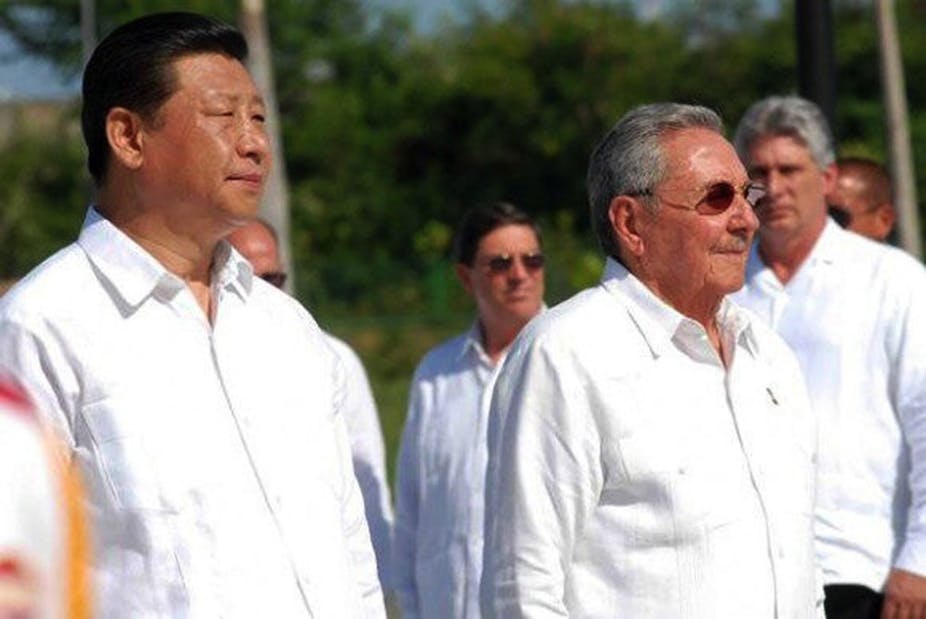Chinese President Xi Jinping has just returned from his second state visit to Latin America, having achieved what no other leader could. His dash through Argentina, Brazil, Venezuela, and Cuba has breathed new life into the four struggling economies, while securing unprecedented access to the natural resources China needs. This “win-win” exchange resembles a pattern established by Xi’s predecessor, Hu Jintao. Hu undertook no less than five state visits to the region during his presidency, and delivered China’s 2008 Policy Paper on Latin America.
The policy paper paints an optimistic picture of comprehensive Sino-Latin cooperation. In reality, though, the relationship has focused rather narrowly on trade, and not always to the latter’s advantage. Over 90% of the region’s exports to China are natural resources, such as crude oil, iron ore, copper, and soybeans.
By contrast, around 70% of China’s exports to Latin America are manufactured goods. This exchange has seen two-way trade skyrocket from US$13 billion in 2000 to US$260 billion in 2013, buoying Latin American economies through the GFC. But Latin commentators complain that China has “kicked away the ladder” under their attempts to climb value chains and sustain manufacturing industries. The exchange appears to have been less “win-win” than it may seem, at least until now.
Keen to invest in infrastructure
The main difference between Xi’s visit and those of his predecessor is its focus on a specific set of Chinese infrastructure investments. In 2004 Hu promised that China would invest $100 billion in the region within a decade, but no specific projects were earmarked and years of stagnation bred intense cynicism. The finance finally began to flow in 2010, but its narrow focus on Brazilian and Venezuelan oil extraction (amounting to nearly $40 billion) dashed hopes of Chinese support for broader economic development in the region.
Last week China signed an agreement to invest $8.6 billion in Brazil, including a railway to transport iron ore and soybeans to Peru’s Pacific coast. Argentina is to receive $7.5 billion, largely for hydroelectricity and railways to improve access to its expanding soybean plantations. Some $4 billion will go to oil production in Venezuela, and an unspecified sum to renewable energy, agriculture, and port development in Cuba.
Xi also attended the sixth BRICs summit in Fortaleza, which established the New Development Bank with a $50 billion fund for further Latin American infrastructure projects. The region’s leaders have lauded the transformative potential of these investments, though many will postpone celebrations until they see the railways, roads, and ports built.
Lesson for Australia
By comparison, China invested $59 billion in Australia between 2006 and 2013, 86% of which was in mining and gas. The main insight we can glean from Xi’s Latin American tour is that China is ready to invest more broadly in infrastructure, especially if associated with agricultural production. This agenda is propelled by the nutritional demands of a projected one billion Chinese city dwellers by 2025, and public anxiety about the safety of food produced in China.
Both in quantity and quality, Australia’s agriculture and food industry is well placed to service China’s growing demand. However, since colonial times, the lack of roads, railways, and irrigation has frustrated attempts to unlock the agricultural potential of the Northern Territory, Australia’s final food frontier.
Xi’s Latin American tour signals that the time is right to assess how Chinese investment could help to solve this problem. From basic infrastructure and irrigation to food processing, canning, and packaging, new opportunities are emerging to steer Chinese investment into value-adding sectors.
To grasp these opportunities will require closer engagement with China to identify mutual interests, dialogue with Latin America about managing large Chinese infrastructure investments, and critically, more sophisticated debate at home about our relationship with China.

